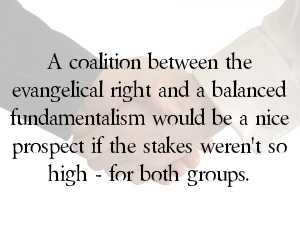Audio Available: "The Ties that Bind Us: The Basics of Fundamentalism"
Body
Central Baptist Theological Seminary (Minnesota) has posted their most recent conference audio, featuring Dr. Robert Delnay and Dr. Jon Pratt.
As iron sharpens iron,
one person sharpens another. (Proverbs 27:17)
Central Baptist Theological Seminary (Minnesota) has posted their most recent conference audio, featuring Dr. Robert Delnay and Dr. Jon Pratt.
Jon Pratt at Theology Central
 The following is a portion of a paper Dr. Straub read at the Bible Faculty Leadership Summit last summer (he also read a variation at the Conference on the Church for God’s Glory last May). It appears here with light editing. See Part 1, Part 2, and Part 3. -Editor
The following is a portion of a paper Dr. Straub read at the Bible Faculty Leadership Summit last summer (he also read a variation at the Conference on the Church for God’s Glory last May). It appears here with light editing. See Part 1, Part 2, and Part 3. -EditorThird, I think we need to work toward better approach to separation. Our practice is often weak and sloppy. This is because our thinking is weak and sloppy. We don’t read widely or think deeply about much of anything. Theological reflection is rare among us. We want simple answers to complex questions.
This sloppiness may be seen in the way we practice separation. It is often harsh and inconsistent. It lacks thoughtful reflection and purposeful expression. But we are not alone in our weak view of separation. I think evangelicals are also weak in this area. They actually do practice secondary separation but they do so inconsistently.
 The following is a portion of a paper Dr. Straub read at the Bible Faculty Leadership Summit last summer (he also read a variation at the Conference on the Church for God’s Glory last May). It appears here with light editing. The paper will appear here in four parts. See Part 1 and Part 2. -Editor
The following is a portion of a paper Dr. Straub read at the Bible Faculty Leadership Summit last summer (he also read a variation at the Conference on the Church for God’s Glory last May). It appears here with light editing. The paper will appear here in four parts. See Part 1 and Part 2. -EditorHaving defined fundamentalism and having set it in the context of the evangelical right, I will devote the rest of this presentation to discussing where fundamentalism is going and what its future may be. We are less than a decade into the new millennium. It’s impossible to predict where we will be at the end of the century, but I am not too optimistic. A few months back I said some disparaging remarks about the current state of fundamentalism on a semi-private listserve I moderate. Word of what I said got out to a well-respected pastor in our circles and he contacted me to encourage me to be careful about dissing fundamentalism. He felt that I might hurt myself and ultimately Central Seminary. My response? I am a historian. We look at the past to understand the present. We look at the present to suggest what the future might be. Arnold Toynbee said once that “the only thing we learn from history is that we don’t learn from history.” I think we need to be honest with our past, realistic about our present and reflective about our future. Only then can we hope to remain faithful to God. I did not create the state that fundamentalism is in, but I think that glossing over our problems will help no one. Young men will continue to leave and the old men will continue to sit smug in self-denial. A real future demands serious reflection.
So what about historic fundamentalism in the 21st century? Do we have a future? Last May, my son graduated from Central with his M.Div. He is currently enrolled in our ThM program. When he finishes, he will go out into the Lord’s work. I wonder where he will land? What movement will he identify with in the next decade, or 30 years? Will he follow my path and remain within this movement called fundamentalism? Will there even be a fundamentalism as we know it? Some of these questions, I cannot answer. But the one I raised in my subtitle—Does Fundamentalism Have a Future?—I do wish to try to answer.
Details on the conference (held Feb. 25-27 in Gilbert, AZ) and the group organizing it
 The following is a portion of a paper Dr. Straub read at the Bible Faculty Leadership Summit last summer (he also read a variation at the Conference on the Church for God’s Glory last May). It appears here with light editing. The paper will appear here in four parts. See Part 1. -Editor
The following is a portion of a paper Dr. Straub read at the Bible Faculty Leadership Summit last summer (he also read a variation at the Conference on the Church for God’s Glory last May). It appears here with light editing. The paper will appear here in four parts. See Part 1. -EditorSo if hyper-fundamentalism adds to the essential core, should we then speak of hypo-fundamentalism? Well, maybe, but I think “new-image” is a better term. A new-image fundamentalist does not like the negative image that older fundamentalism carries and wants to create a new category that will allow them to be seen in a better light by their fellow evangelicals.1 As such, some of the things that have given other parts of fundamentalism a bad image are jettisoned outright or quietly abandoned.
What are the characteristics of a new-image fundamentalist? Well clearly new-image men are evangelical in the classic sense of the term—committed to the core of Reformation truth summarized at least by the five solas: Scriptura, fides, gratis, Christus, and Deo Gloria. Part of the new image is pointing out their close affinity with other evangelicals in these important doctrinal views. “We believe what you believe—we cannot be that bad!” By saying this, I am not at this point meaning to exclude non-Calvinists necessarily from the term evangelical. But I am suggesting that there is, despite current revisionist notions within evangelicalism to the contrary, an essential body of truths that represent historic evangelicalism, including the nature of God, the reality and eternality of eternal punishment, etc. Little separates the new-image men who sometimes self-identify as fundamentalist from their conservative evangelical cousins. Both hold to some level of separation, primary at least, and even to some extent, so-called secondary separation. But the new-image men are tired of the hyper-fundamentalists and are looking desperately for something more balanced. They find that balance in the evangelical right.
Discussion